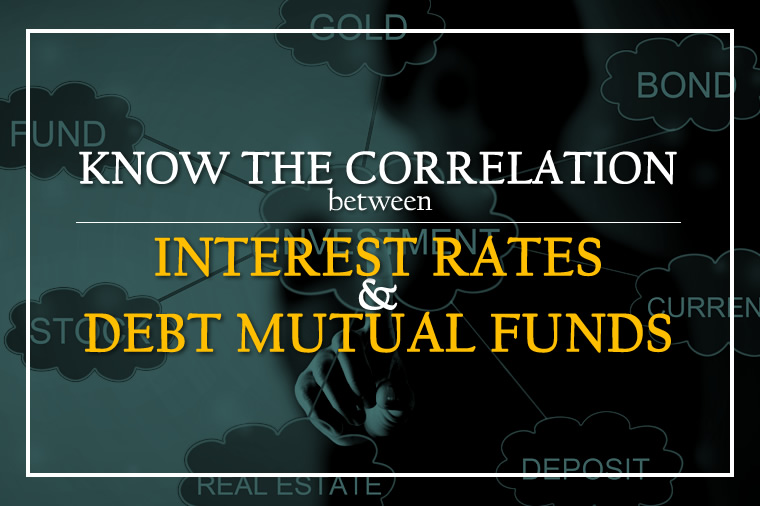Clear Your Thoughts on Interest Rates & Debt Mutual Funds

Last Updated : May 16, 2016, 8:30 a.m.
Debt mutual funds are generally considered as a valuable investment option for investors looking for stable return. Factors such as interest rates, inflation rates, currency fluctuations, credit risk and current account deficit of the government determine the returns to debt mutual fund investors. Debt mutual funds make investment in government and corporate-backed fixed income securities such as bonds. With bonds, you get interest at a specified rate within regular intervals. The ratio of interest and purchase price is used to calculate the yield of the bond.
Bond price vs Interest rates
The price of the bond is inversely proportional to the interest rates. The prices of the bond fall when the interest rates rise from the existing level. Similarly, when there is a fall in interest rates, the bond prices start to rise. For instance-A 10-year government bond with a face value of Rs 1,000 at a coupon rate of 8% will mean an interest payment of Rs 80 to the investors. Suppose if the lending rate rises to 10%, the new bonds with the same face value of Rs 1,000 and same tenure of 10 years offer a coupon rate of 10%, making the 8% existing bonds less attractive. As a result, the bond will trade below its face value. Suppose if the existing bond is trading at Rs 900, then the yield of the bond will be more than 8%.
Yield of the bond=Interest received/pricex100 (80/900×100=8.89%)
If the interest rates fall to 7%, the existing bonds at 8% coupon rate will grab the attention of more buyers. Now the bond will trade at a price greater than its face value. If the bond is trading at Rs 1,080, the yield of the bond will be 7.41%, lower than the initial rate of 8%. Interest rate is directly and inversely proportional to the yield and price of the bond, respectively. Falling interest rates will increase the demand for existing bonds and thus raise the price in the secondary market. Similarly, the rise in interest rates will make the existing bonds to trade below their face value.
Relation between debt mutual fund returns and interest rates
Governments and businesses use fixed income securities to raise capital. The bond issuers must provide competitive yields on the fixed income instruments like bonds to catch the eye of buyers. Individuals, however, can’t access these bonds so often. Mutual fund houses can purchase these bonds. So, if you are a mutual fund investor, you are somehow investing in these bonds. The Net Asset Value (NAV) of the mutual funds is ascertained as a sum of bond price and interest accrued. The interest accrued is calculated daily to find the exact NAV of the fund, which changes with the prices of bonds held by the investors and interest accrued on thereof. Interest rates, which determine the price movement of the bonds, will also have an impact on the NAV of the debt fund if it undergoes any change. Similarly to the bonds, the NAVs of the debt mutual fund also are inversely proportional to the interest rates. The NAVs of the debt funds rise if the interest rates come down. Upon rise in interest rates, the NAVs start to fall.
